For the past 10 years, push notification ads have been a source of excellent traffic quality across popular business verticals.
This format perfectly fits into the advertisers' marketing campaigns and appears to be a beneficial tool that helps to reach and engage customers. According to reports, the average opening rate for push notifications is 90%.
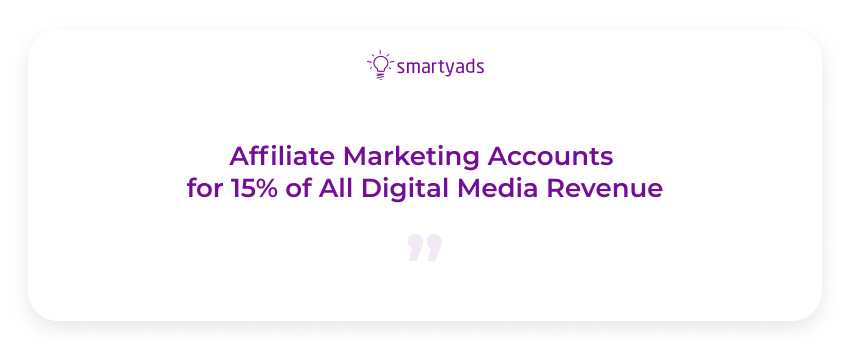
The increase of push ads over email marketing is more than 50%, indicating that push notifications can reach 50% more people. Working as a global content delivery channel, push ads represent premium advertising units that are suited for mobile devices. Recently we've also seen the arrival of push notification ads for laptops and desktop devices.

So, what is push advertising and how does it work?
Push advertisements are projected in the form of push notifications. They appear as a brief message on the screen of a smartphone or computer prompting the user to take an action.
The average push ad consists of a short notification message (an alert message) combined with an icon that appears on a user screen as soon as it is triggered.
Push notification ads can incorporate media and action buttons that be customized. These ads can be used to deliver hot offerings and updates, send reminders to finish a purchase, and much more.
Push advertising is often compared to native ad format because it offers most of the benefits of native advertising like being more user-friendly and less intrusive.
Although both push notifications and push advertising are internet-based messaging and have some similarities, for example, the way they are displayed and how quick they are, push notifications and push advertising are not the same thing.
Push notifications are sent by devices; for example, the system notifies owners about OS updates, or a specific app notifies users about new game features. Push ads are similar to push notifications, but their purpose is to deliver ad content.
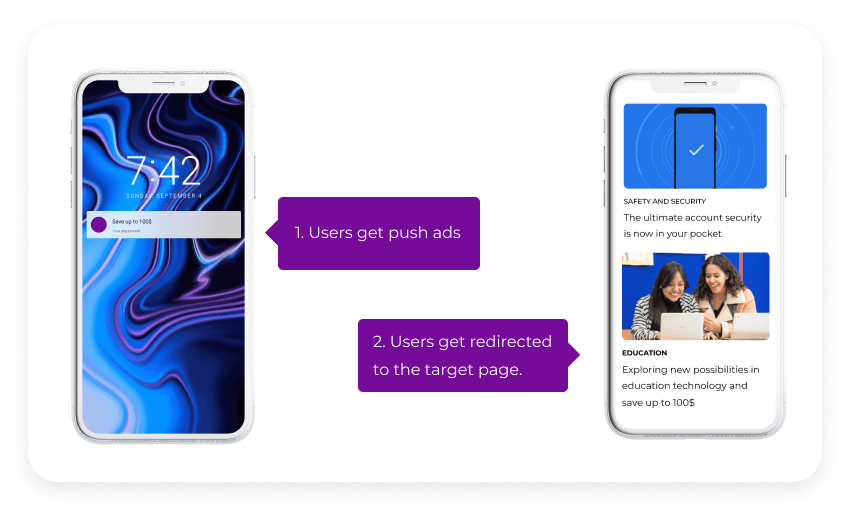
How push ads work
Push notification ads are mostly consent-based advertisements delivered to a user's device via a website or a mobile app. By consent-based, we mean that a user must first agree to receive a push notification ad before it may be sent.
Since they are consent-based, they can be highly effective for user engagement and conversion because you will be targeting those people who have previously expressed interest in your business and offerings.
Because push ads are consent-based, the website or app that sends the campaign must always ask consumers to opt in to receive push notifications.
This can be accomplished by directly asking users whether they want to accept or reject notification alerts. It could also be a subtle offer in which customers are persuaded to opt in based on the benefits they will receive.
For instance, a direct question could be the following: “Allow notification alerts, click yes or no.” An indirect question could be as follows: “click here to receive notifications on our special discount sales”.
The opt-in request for in-app push marketing is usually made during the installation process.
Why are they so powerful?
A typical US citizen gets 46 push notifications every day. When it comes to tightening user engagement, the most luck could be found in Europe with the highest push reaction on Android (11.4%) and iOS (5.5%).
Push ads immediately capture users’ attention with the short message just at the right time and place.
To boost your push marketing campaigns, it is worth shifting to this user-friendly and profitable advertising channel that enhances communication with your potential and existing clients.
Here are the key benefits that prove the efficacy of push ads for advertisers:
A fraud-free environment
Users themselves choose to subscribe to all notifications if they wish to receive them. Hence, push ads are directly transmitted to the users whose subscription numbers are attributed to their mobile devices.
That, in turn, ensures high-quality traffic and eliminates even a tiny possibility of fraud, which positively affects click-through rate and viewability.
A bigger impact at a lower price
Such small alert notifications require minimum costs as well as effort. Thus, they drive the highest customer engagement by delivering only a short, precise message.
Thus, even having a small budget, an advertiser or affiliate marketer receives a broader reach.
Push notification ads ensure maximum viewability
Compared to other ad formats, like banner ads, usual push notifications are delivered right to the user's screen, even when they are not searching the web or interacting with an app.
As a result of this, push ads campaigns are more memorable and closer to your target audience. They are also not susceptible to ad blindness like banner ads.
Additionally, ad blockers do not affect push ads since they are consent-based. Thus, the ad budget of the advertisers is not getting wasted.
Push ads offer better retention in the long run
The audience interested in your products or services is eager to know more about updates and hot offers.
Push ads are like a constant reminder of your brand presence in customers’ lives – they can turn inactive users into active ones or simply update existing clients with regular notifications. This way it can be used as a part of reminder advertising.
While with this, you can appeal to every client individually, it also increases the retention rate in the long-term perspective.
Highest reach
One of the proven benefits of push ads is that advertisers can target their potential users on any device or platform – it helps to attain higher retention rates and reach new clients on a global scope.
Push marketing campaigns could be successfully used for geofencing and targeting across geos, OS, IP, etc.
Reduced manual operations due to automation
You can start launching push notification campaigns in minutes as they do not require any special skills – push ads can be easily found and used from the drag-and-drop editor.
Push notification ad campaigns can reactivate inactive users for onboarding campaigns, incomplete purchases, and transaction notifications as well.
Unique customization
Thanks to instant message delivery along with advanced customization options, you can configure how the user will see the message on mobile (especially important for time-sensitive offers and discounts).
Web push notifications vs app push notifications – what’s the difference?
In-app push notifications originate from a mobile app installed on a user’s mobile device. They can be delivered at any time. However, a user must have the mobile app installed to receive app push notifications.
Web push notifications are also known as in-page push notifications. They are typically delivered via a browser to both mobile phones and desktop computers. On mobile devices, they appear similar to push notifications from apps, except that they are sent from a web browser on the phone.
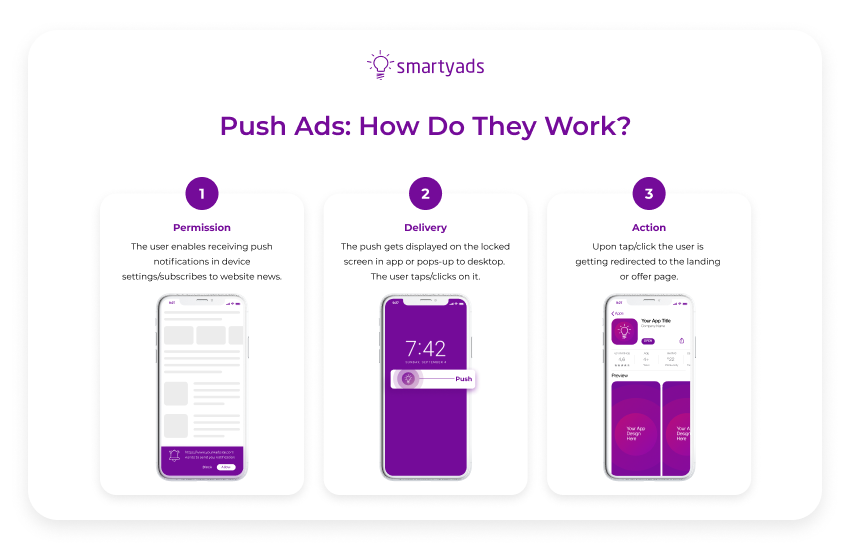
On computers, the push notifications are delivered on the top or bottom corner of the screen when the browser is open. However, on mobile devices, a web push notification can be delivered regardless of whether the browser is open or not.
To deliver web push notifications, all you need is a website that has web push code enabled. This implies that marketers who don't have apps can still benefit from push ads campaigns by leveraging in-page push ads notifications.
App push notifications are sent via code embedded in the app, so only users who have downloaded the app can receive push ads.
Both web and in-app push notifications can be regarded as universal ad formats that are suitable for all kinds of businesses. Their content can deliver promotions, news, alerts, blog posts, news, e-books, personalized incentives, and the list goes on.
Cases of using push advertising to straighten your business
Push notification advertising is an indispensable part of omnichannel advertising campaigns. They aim to reveal more possibilities for content promotion to fulfill all your business purposes.
Push ads help to generate more leads, views, and user clicks, as well as boost brand awareness and increase user engagement across channels.
What could they be useful for?
- discount announcements, sales messages, or other offers;
- surveys, questionnaires regarding your brand (for instance, quality evaluation);
- pop-up notifications about new blog posts or product updates;
- offers to download an app (app promos);
- reminders, alerts (about a season discount, hot offer, etc.) based on geo-position;
- educational information (tutorials that will drive more authority to your brand);
- latest news, eBooks, and various downloadables.
Considering the above-mentioned, we cannot deny that push notifications ads are highly customizable messages that help to capture the attention of your customers and build user engagement on a more personal level.
As a result, push campaigns allow advertisers to make their ad campaigns more diverse and multipurpose.

Offers and verticals with great potential for push notification advertising
Push ads are a type of digital marketing that can be used in any B2B or B2C campaign; however, to give you a better idea of how they may be used in specific industries, we'll go through some of the most prominent verticals and offerings where push advertisements are widely used.
Even if your vertical isn’t covered here, you can pick insights on how to implement push ads for your marketing needs. Let’s go straight in.
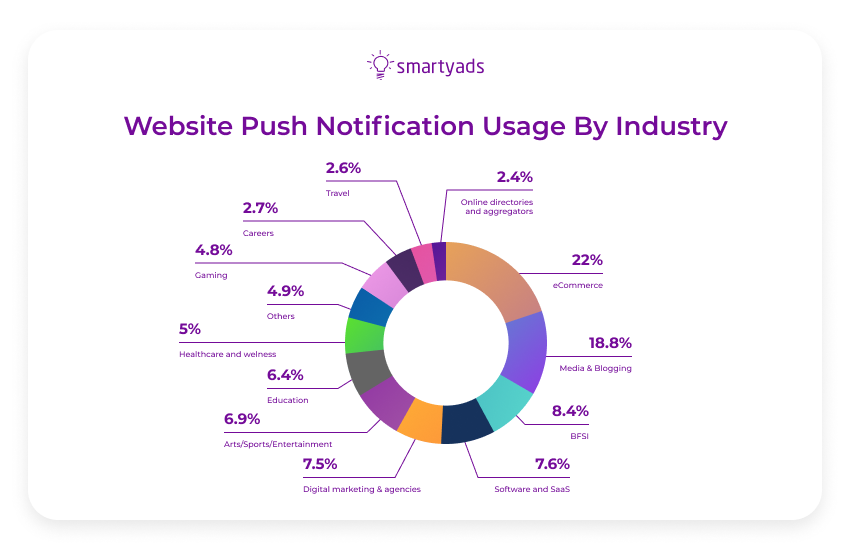
E-commerce
According to reported research, e-commerce brands were identified to be the leading senders of push alerts, accounting for 22% of all push notifications sent across various verticals.
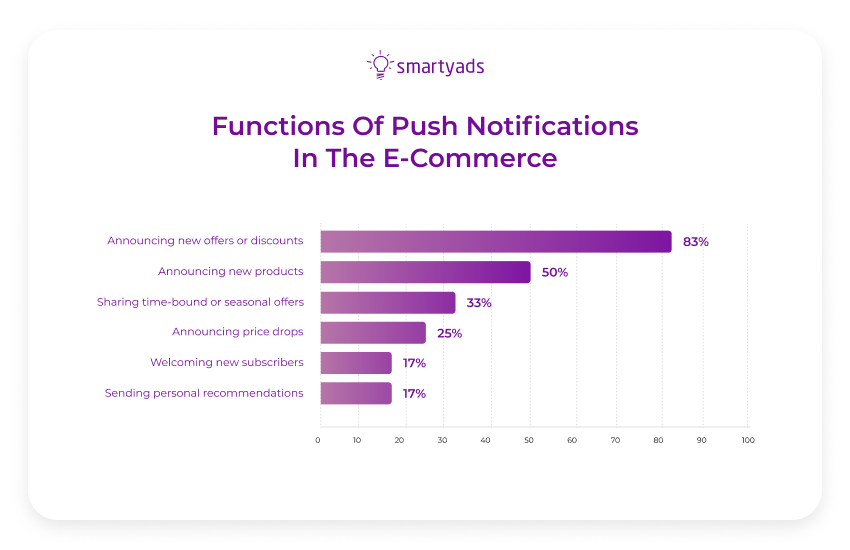
Push ads notifications are most commonly used in the e-commerce industry to announce special offers and discounts, over 90% of e-commerce brands use them for this purpose.
The next most common reasons are new product announcements or limited-time discounts. They are also used to send personalized offers and ads to users based on their activity or history.
Online casinos and sports betting
Young adults all across the world enjoy online casinos and sports betting. Casino.org reports that approximately 26% of the world's population participate in online gambling, while 46% of adults in the United States are interested in sports betting.
Advertisers in this niche send push notifications to participants who consented to receive ads informing them of upcoming sporting events and games that they might be interested in betting on.
Push advertising can be quite effective in this vertical because interested participants often forget when the game starts, so they can place their bids and stakes at the appropriate time.
Because push advertisements are based on consent, advertisers' ads are less likely to be blocked or reported by users who perceive gambling to be objectionable.
Healthcare, wellness, and cosmetics
People are naturally inclined to respond positively to offers that relate to enhancing their health and promoting an attractive appearance.
The BusinessApps report on push notifications identified the wealth and wellness industry as one of the leading sectors that have adopted push ads.
The urgency that a typical push advertorial presents coupled with people's interest in maintaining a healthy lifestyle makes push ads quite effective for this vertical.
Apps and mobile games
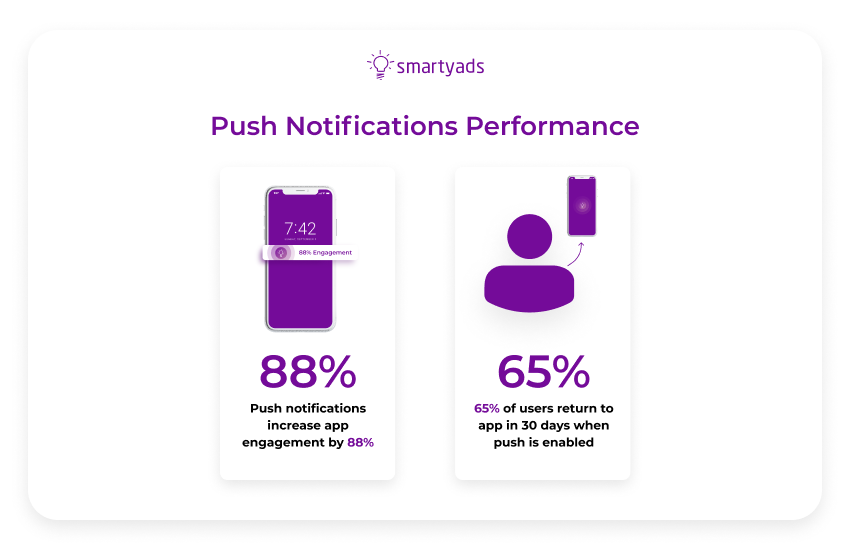
Recent reports on Investpro suggest that push notifications ads on mobile apps can increase app engagement by up to 88%, and when push notifications are enabled, 65% of users return to the app within 30 days.
Push notifications have been shown to increase CTR and app retention by 3-10 times.
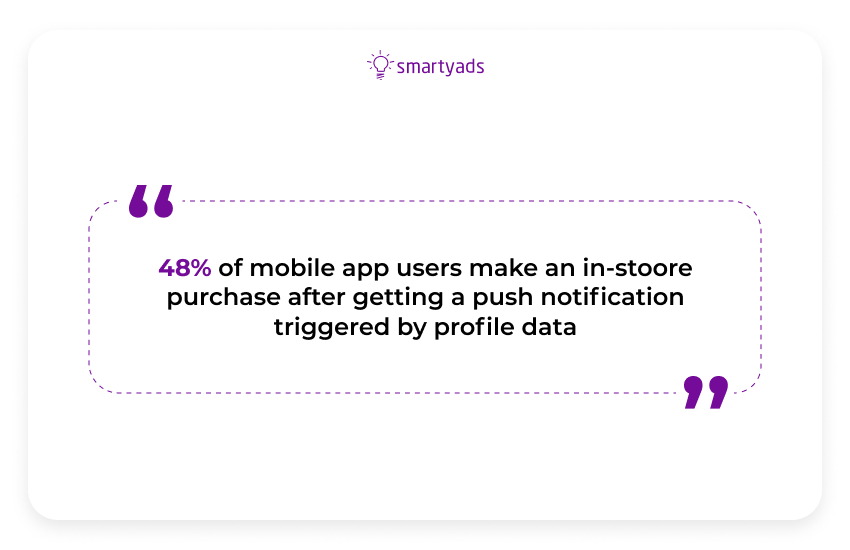
People use applications for a variety of purposes, and mobile gaming is also on the rise, thus delivering in-app push ad notifications would not only increase user engagement and retention but also encourage in-app purchases and installations.
You may send out attractive deals and discounts for a premium service and an in-app purchase. Other marketers might utilize this channel to promote their items or apps to increase the number of downloads and engagement.
Travel and tourism
Marketers in the travel and tourism niche can take advantage of the prompting style of push ads to remind users to plan their next holiday trip.
The ad can include a small, beautiful picture of a tourist location or a discount if they plan the trip for a particular period, like a Christmas holiday trip.
It could also be an informative marketing strategy advising people about beautiful tourist locations while encouraging them to use your travel/tourism services.
How to Create a Successful Push Ads Campaign
Unlike in the past, push notification ads are no longer obscure; more brands and advertisers are adding this ad format to their campaign ad format choices. So you should know that you might be competing with some rivals to get users' attention with push ads.
The question is how do you stand out? How do you get more users to click on your push ad? Read on to learn about some strategies and a few tips that successful push ads notification marketers have used.
Your image should be simple but captivating
You've probably heard the expression, "A picture is worth a thousand words," and it's true: studies show that the human brain processes visuals 60,000 times faster than text.
For many people, it’s the image that attracts them to view an ad, so you wouldn’t want to get this wrong. Many advertisers are so focused on the ad content that they underestimate the value of a relevant and compelling image.
Beyond the fact that every ad campaign should have good images and visuals, your creative choice is especially important for the push ads format. Why is this so?
Push ads deliver a notification that is always in a preview form, and users would have to click the notification to direct them to a page where they see your ad description in detail.
The important part is being able to attract the viewers enough to click the notification. So your image choice has to be carefully designed or selected to fit into the push ads format and also be expressive yet simple.
Your title should be brief but engaging
Remember that you're writing for a small section of a phone screen, so the long-form text isn't an option for push ad formats, unlike other ad formats. This means you'll have to entice users to click with just a few phrases.
In summary, your title must communicate the most beneficial part of the push campaign succinctly and engagingly.
For example, an e-commerce site might send out a push notification that says, "get a 30% discount when you shop today", or "flash sales are ongoing, click to shop now".
What matters is that the headline creates a sense of urgency in the user, making them feel as if they are about to lose out on a tremendous opportunity.
Your ad copy should be descriptive
The usual push notification leads to a landing page and that is where you make the sales. You have to ensure that your landing page doesn’t disappoint a user who must have clicked on the push ad.
The ad page should have more details about the product or ad object, including larger and more descriptive images, text descriptions, and reviews.
Get creative with emojis
Interestingly people are more receptive to ads that are creative and have some fun elements. According to studies on push notifications, emojis improve response rate by 20% another report suggests that emojis can increase CTRs by 4.9%.
You may add one or two relative emojis to the title or your ad text and see how users react.
Send personalized messages
Personalized messages always convert better in advertising, and push ads are not an exception. As a matter of fact, the poll in March 2019 shows that more than half of responding internet users in the United States stated they signed up for tailored promotional communications from corporations; indeed, 19% of respondents subscribed to such messages regularly. The fresher data for 2022 year shows the following dynamics:
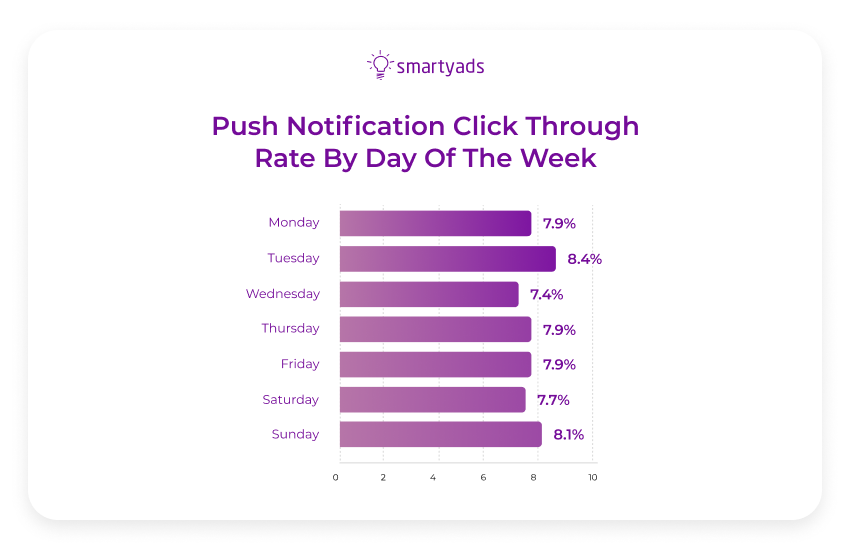
Push notification engagement is significantly increased when recipients are addressed by name, their location is included, and their purchase/content history is highlighted. Even minimal customization boosts open rates by over 10%.
You can also employ some creativity by delivering a diverse set of ads instead of showing the same ads to users all the time.
Get your ad delivery timing right
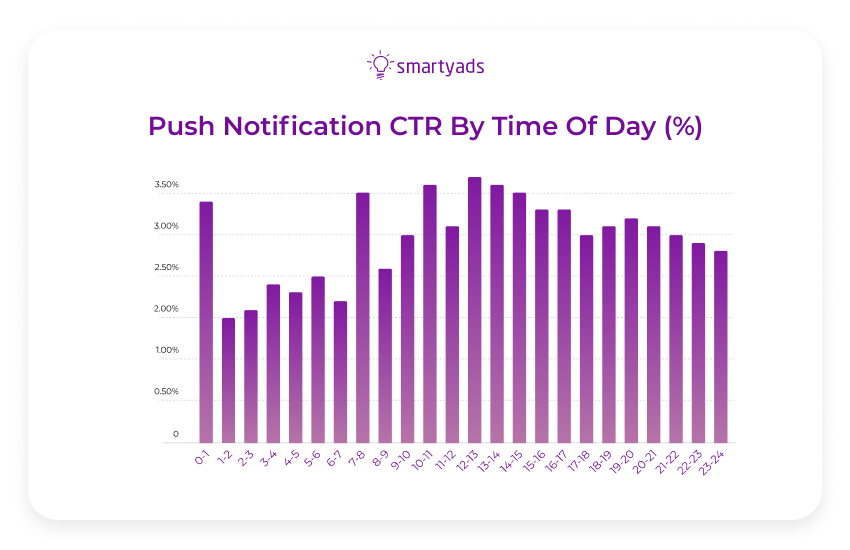
The best-written push notification will be ignored if it is delivered at an inappropriate time. According to research data, the best engagement hours are between 7-8 a.m., when people are just getting started with their day or while on their way out.
Another increase in involvement is between 10 a.m. and 2 p.m. indicating that lunch and early afternoon are also good times for engagement.
Predictably, the lowest interaction rates occur between 1 and 7 a.m., indicating that most users would be asleep and would not check their phones during these times.
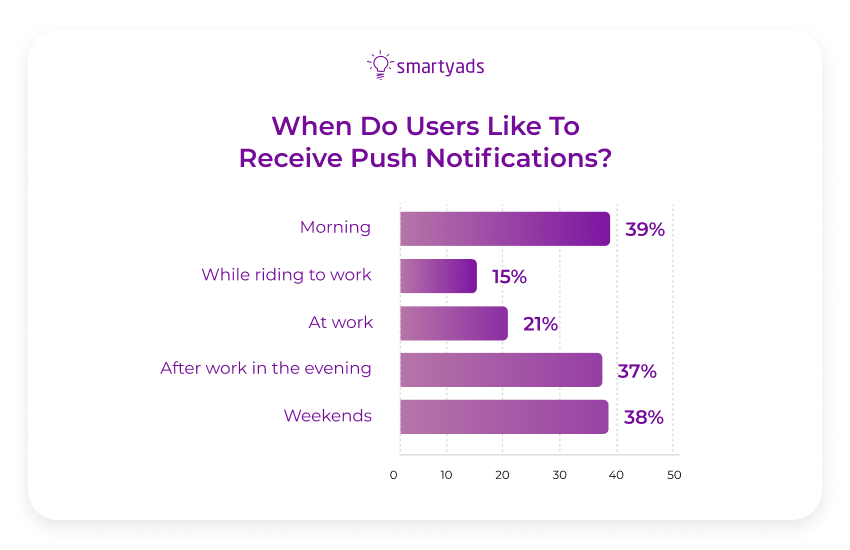
Collaborate with an efficient push traffic source
Your traffic source is critical to your push ad campaigns; it is not enough to have the best idea, vertical, or ad creative; if you do not have a high-quality traffic source, all your campaigns may be futile.
Select a reputable traffic network or DSP with the relevant resources and network to deliver your push ads to the appropriate audience.
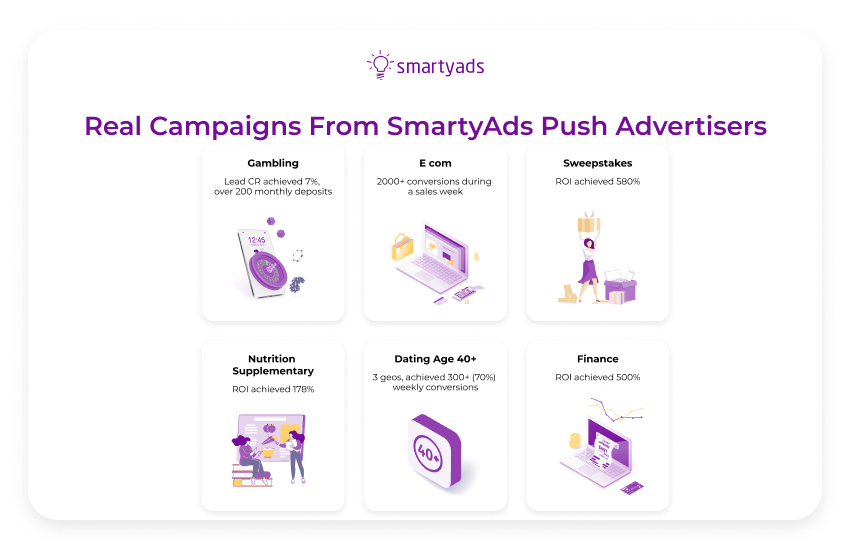
Points to consider when choosing a push traffic source
- Ensure that your traffic source supports the push ad format. Although push ads are becoming popular, not many ad networks, traffic sources, and DSPs support this format yet. You have to be sure that the push format is available before making any form of financial commitment.
- Ensure that the push traffic source supports your vertical. You have confirmed that your traffic source supports push ads. Next, you have to ensure that they have traffic for your vertical and niche. For instance, some push ad networks may not support adult-content ads; others may also not support gambling ads. It is important that you know what verticals are supported.
- What targeting options are available for your push campaign. Advertisers can narrow their target audiences by only showing their ads to certain people. In this way, the ad experience is relevant and budgets are not wasted on displaying ads to audiences who will not convert. Your ad network or traffic source must provide elaborate targeting options that will enable effective ad delivery.
- Usability of your ad network platform. A good ad network, DSP, or push traffic source should provide a user-friendly, simple, and highly flexible platform. It should be easy to operate yet should have all the necessary features that would enable efficient delivery and allow you to adjust your push ads campaign setup if needed.
- Reputation and security of your traffic source. Ad traffic fraud is a real problem, and advertisers are losing a huge part of their ad budget to ad fraud and fake traffic sources every year. You should find out what security measures your push ad network has put in place to prevent traffic fraud and engage only real users.
- Tracking and monitoring features. A quality traffic source should offer monitoring, analytics, and tracking solutions to help you monitor and measure the performance of your push ads campaigns.
Make your campaign work with different trending ad formats and a superior platform in hand! Get Started.

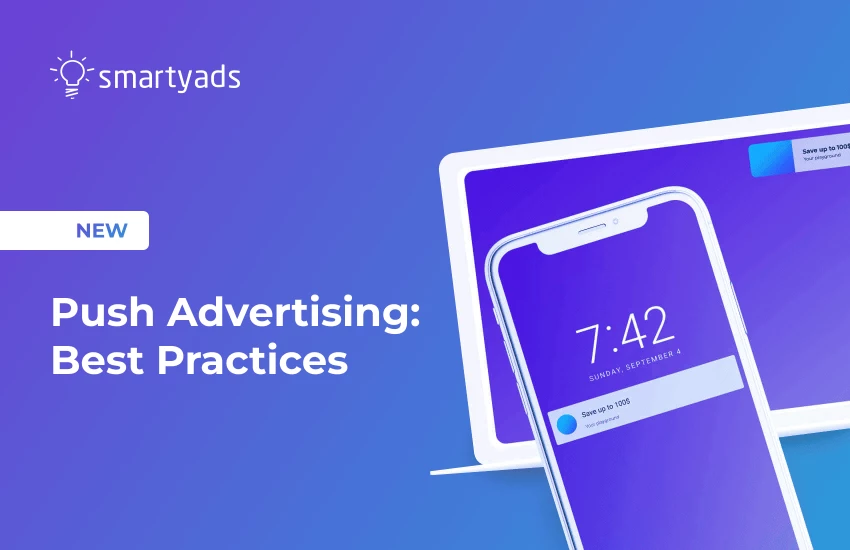
.webp)


